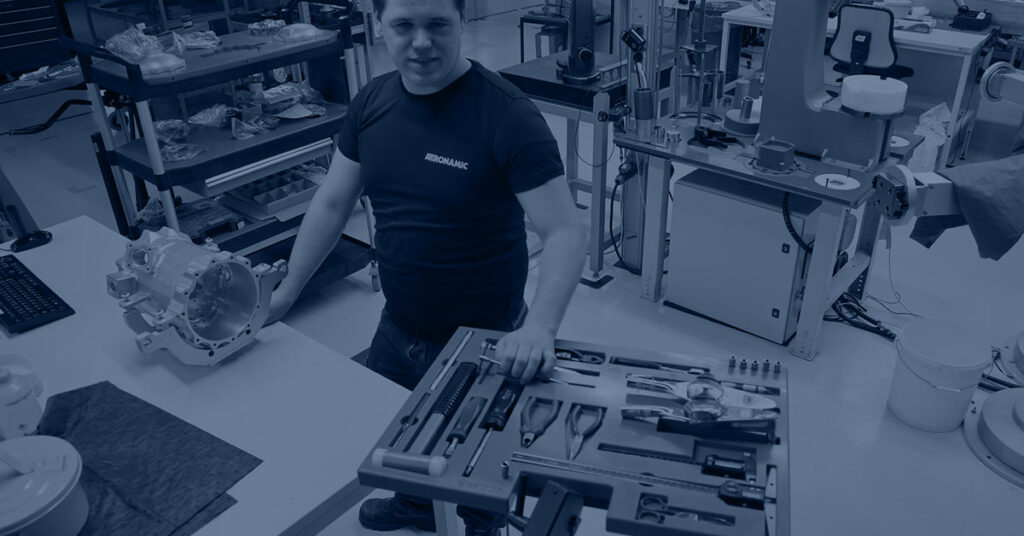Taking FOD prevention to a higher level
Jeroen Prins - Director Quality Assurance at Aeronamic

Foreign Object Debris or Damage (FOD) might be one of the best-known terms in the aerospace industry. It is not surprising, since FOD prevention is a crucial part of the manufacturing process. At Aeronamic, we have spent the past decade improving our housekeeping in order to reach a 6s standard. Our employees are trained to be aware of the minor and catastrophic results which can occur due to FOD. Entering into new partnerships with parties such as the defense industry, Collins Aerospace and Pratt & Whitney also played a big part in ensuring we stay at the top of our game when it comes to FOD prevention. With this blog, we would like to share with you how we improve our operational excellence and take FOD prevention to a higher level.
An internal and external necessity
Foreign Objects are a major cause of aircraft damage and unscheduled maintenance. Foreign Object Debris includes hardware, tools, parts, metal shavings, broken hardware parts, pavement fragments, rocks, badges, hats, paper clips, rags, trash, paperwork and even wildlife. Basically, any foreign object which finds its way into an aircraft or engine can contribute to FOD. Any damage can result in the necessity for minor repairs or even cause catastrophic events. That is why preventing FOD is everyone’s responsibility. Here at Aeronamic, we really see this as a shared value. “To make sure everyone is taking their responsibilities seriously, FOD prevention is a subject we are continually making our colleagues aware of, deepening it wherever possible,” says Jeroen. “It’s already a top priority for our clients, so it’s logical for us to treat this internally with the same level of importance. We see it as an overall professionalization of our processes.”

It’s a job needing people skills
Every individual at Aeronamic has a responsibility to the larger team, especially when it comes to preventing FOD. By constantly checking each other’s work, we prevent errors from occurring in the manufacturing process. You could say that, due to these quality checks, FOD prevention will always be a job which needs people skills at its core. That requires employee training. Aeronamic developed an FOD prevention training program which give its employees more information on the risks and prevention of FOD. “Our colleagues will be taking an e-learning course which explains step-by-step what FOD is and what they can do as a team to prevent it. Each new colleague who joins the Aeronamic team will automatically take exactly the same training course as it is built into our onboarding process. That way, each and every one of us is aware and knowledgeable about FOD prevention.”
This is how we do it
Jeroen continues: “When you have increased your team’s awareness to the best possible level, it’s time to start introducing some new ideas. We recently placed brand new signs in our factory halls which show the level of FOD awareness in various production areas. Blue indicates the FOD Awareness Area, yellow is for the FOD Control Area and, last but not least, red is for the FOD Critical Area. In all areas, eating and drinking is strictly prohibited. Of course, parts and tooling are always needed in designated areas. We ask every colleague to organize their tools and to always return them to the drawers and cupboards where they belong.” The FOD Critical Area is called critical and marked red for a reason: it’s where our team should be especially alert to FOD prevention. “The Aeronamic test cells are in the red area. These test cells are of major importance to our final acceptance tests and final inspections of the assembly. FOD here can be catastrophic for the test cell itself, the surroundings and the economically high value products. These areas therefore should always be kept neat and tidy. Other examples of making significant gains in FOD prevention is by investing in more spacious workspaces (for a better overview of the entire hall), organized eating and drinking areas (such as our designated coffee corners) and well-considered toolboxes.
As you can see, we always continue to push limits, including when it comes to FOD awareness and prevention. What are we doing which might also encourage you to take another look at how you go about things when it comes to FOD prevention?